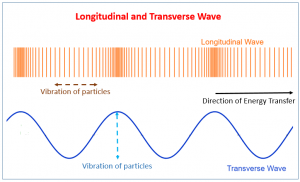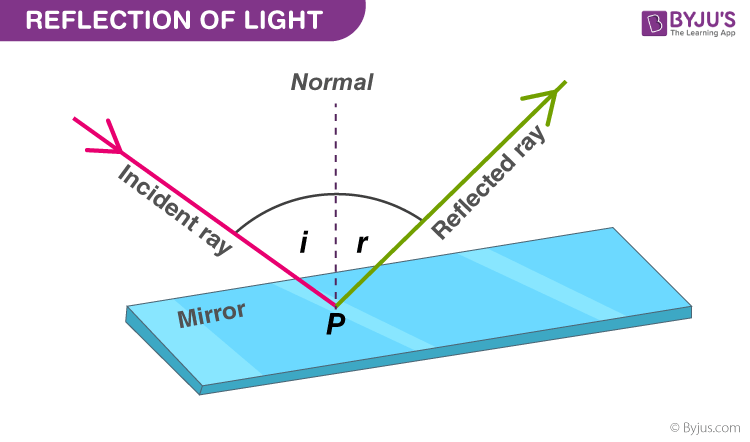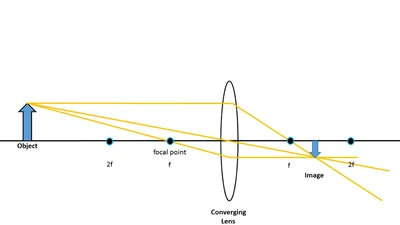- Waves transfer energy without transferring matter
- They are illustrated by wavefronts, which each represent different waves from above
- Wave equation: Velocity (m/s) = Frequency (Hz) x Wavelength (m) OR (v = f x λ)
Waves have many different features. These include...
- Speed: The speed of the wave is simply how fast it travels. It is worked out by Wavelength x Frequency. Its unit is meters per second (m/s)
- Frequency: The frequency of the wave is a measure of the number of complete waves that passes a point in a second. Its unit is hertz (Hz)
- Wavelength: The wavelength is the distance between two of the same points in consecutive waves. Its unit is meters (m)
- Amplitude: The amplitude of a wave is the height of the wave. It is the difference between the height of the crest (highest point in the wave) and the height of the trough (lowest point in the wave)
Transverse and Longitudinal Waves
- There are two main types of waves: transverse and longitudinal
- Transverse waves are waves that have points that vibrate perpendicular to the direction of the energy transfer
- Longitudinal waves are waves that have points that vibrate in the same direction as the direction of the energy transfer

Longitudinal and transverse waves
Reflection, Refraction, and Diffraction
Reflection
- Reflection happens when a wave touches a surface
- The angle of incidence (the angle at which the wave touches the surface) and the angle of refraction (the angle at which the wave is reflected) are always the same
Image of reflection
Refraction
- When waves enter a different medium, the speed it travels at changes
- This changes the direction and the wavelength of the wave
- If waves become slower, the wavelength will decrease
- If waves become faster, the wavelength will increase
Diffraction
- When waves go through a narrow gap or pass an edge, they spread out
- This happens when the wavelength of the wave is smaller than the gap
- There is more diffraction with a smaller gap
Image of diffraction
Light
Light is a transverse wave on the electromagnetic spectrum
Reflection of Light
- A useful application for the reflection of light is on mirrors
- Light waves creating images which can be reflected on a mirror
- The image will be of the same size as the object, same distance from the mirror as the object, and will be directly in front of it as well
- The angle of incidence is equal to the angle of reflection
- An image is created because
- As the angle of incidence is equal to the angle of reflection, the observer would think that the image comes from where the reflected ray came from
- As objects reflect light, the many light rays will reflect on the mirror
- By extending the reflected rays into the direction of the mirror, the reflected rays will eventually meet a point
- That point is where the image forms
- The image shown on a mirror is called the virtual images, and the extension of the reflected rays are called virtual rays

Diagram of reflection of light
Refraction of Light
- When light enters a different material, the speed of light changes, causing it to refract and travel in a different direction
- An investigation that shows the refraction of light is done through refracting light on a glass block, and helps us find the refraction index of the material the light ray passes through
- Here are the steps of the investigation
- Place a glass block on top of a piece of paper, and draw the outline of the block on the paper
- Using a ray box, create a light ray that passes through the glass block
- Mark the following points to draw the direction of the light rays on paper
- A point where the light ray has yet to touch the box
- The point the light ray enters the box
- The point where the light ray leaves the box
- A point after the light ray has left the box
- Remove the block and connect the points to form straight lines which show the direction of the light rays
- Do this for several light rays to work out the refractive index
- All materials have a refractive index which indicates the ratio of the speed light travels in the material to the speed light travels in a vacuum
- The refractive index is worked out by the equation: Refractive index= sin(angle of incidence)/sin(angle of refraction) OR n = sin i / sin r
- The angle of incidence is the angle which the light ray hits the material
- The angle of refraction is the angle which the light ray refracts within the material
- When a light ray enters a material with a higher refractive index, the light ray will travel towards the normal

Diagram of refraction of light
- Materials also have a critical angle, which is the angle of incidence where the angle of refraction is 90°. Any angle higher would cause light rays to reflect within the material instead
- The critical angle can be found by the refractive index with this equation: sin(critical angle) = 1/refractive index
- When all these light rays are reflected it is called total internal reflection
- This concept is used in optical fibres, which allows data to travel back and forth quickly on the internet
- Optical fibres can also be used for medicine to see within the human body (with the light reflected within the optical fibres)
Thin converging lens
- A converging lens is a lens that allows rays of light parallel to the principle axis, the center of the lens) to focus onto a principle focus point
- The curve of the lens determines how far the principle focus point is away from it. This distance is called the focal length
- Lenses form real images of objects in front of them
- The position of the the image can be determined by drawing a ray diagram

The method to draw a ray diagram is as follows
- First, draw a line from the top of the object parallel to the principle axis to where it touches the lens above the center
- When it has reached the middle of the lens, draw a line connecting it from the end of the previous line so that it passes the principle point
- Finally, draw another line from the top of the object through the center of the lens so that it touches the previous line. The point where the lines intersect is where the image will form
The image formed will always be a real and inverted image
Depending on the distance of the object from the lens, the image is either enlargened, diminished, or the same size
- If the object is placed at a distance further than 2 times the focal length away from the lens, then the image will be diminished (becomes smaller than the object)
- If the object is placed at a distance less than 2 times the focal length away from the lens, then the image will be enlargened (becomes larger than the object)
- If the object is placed at a distance of 2 times the focal length away from the lens, the iamge will be the same size as the image
Differences between a real image and virtual image
- A real image is formed by the convergence (meeting) of many light rays
- Real images can be projected on a screen
- Virtual images are formed by refraction or reflection
- Virtual images cannot be projected on a screen
Use of the single lens in a magnifying glass
- When an object is at a distance from the length closer to the focal length, the rays diverge and do not form a real image as the rays do not converge
- However, a virtual image is formed from light rays from the object that through the glass. The image will be enlargened
Electromagnetic Spectrum
The electromagnetic spectrum is a range of waves that have different frequencies and energies
- These waves are all transverse
- They all can travel in a vacuum
- They all travel at the same speed in a vacuum (of 3.0 × 108m/s) and similar speeds in air
- Different radiomagnetic waves have different uses
- Radio waves: Used for wireless communication, as they can transmit easily in the air and do not harm the human body as much due to its lower frequency
- Micro waves: Used for wireless communication (WiFi, radar, mobile phones, satellite communciations), and heating things at a high intensity (eg. in a microwave)
- Infrared rays: Used in surveillance cameras to see in the dark, send signals to TVs in remotes, and are used in optic cables. They are also used in more purposes in industry, medicine, and research
- Visible light: Used to see and take photos and videos
- Ultraviolet rays: Ultraviolent is absorbed in some substances and make them emit visible light, which makes this used in fluorescent light bulbs and secret marks using an invisible ink that can be seen through flashing a light on it
- X-rays: Used in medicines to pass through body tissues and be absorbed by bones, creating an image that show the bones within the body
- Gamma rays: Used to kill cells and living tissue, and is very dangerous due to its high frequency. It is also used for killing off bacteria
Dangers of electromagnetic rays
- Microwaves: In an excessive amount, they can cause your organs to heat up
- X-Rays: Can cause harm to body tissue because of its high frequency, which is why there is a lead vest and an attempt to minimise the exposure of patients to X-rays
- Ultraviolet Rays: Ultraviolet radiation can cause health risks such as skin cancer, skin damage, cataracts or eye damage, and immune system suppression when an individual is exposed to ultraviolet rays too much. These ultraviolet rays often come from the Sun or tanning lamps
Sound
- Sound (longitudinal) waves are produced by vibrating particles
- Sound cannot travel through a vacuum (such as in space) and need to travel through a medium as sound is spread through vibrations
- Sound waves with a greater amplitude create a larger sound, and waves with a smaller amplitude create a softer sound
- Sound waves with a great frequency create sounds at a higher pitch, and waves with a smaller frequency create sounds at a softer pitch
- Sound waves can be reflected and create echoes
- Sound waves consist of compressions (where particles are more concentrated and packed together) and rarefactions (are less concentrated and further apart)
- A healthy human can hear sound waves with frequencies 20Hz-20,000Hz
- Sound travels faster in solids than in liquids as the moleecules are closer together and can transmit vibrations better
- The formula to find the speed of a wave is v = λ x f
↞Previous Topic Next Topic ↠
